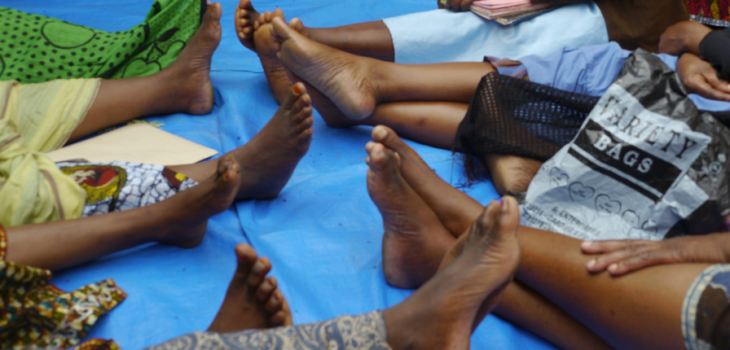By Shelley Lees and Mark Marchant (London School of Hygiene & Tropical Medicine)
This blog was written to mark this year’s World Aids Day taking place on 1 December 2018.
Intimate-partner violence is virtually a universal phenomenon with global estimates revealing that around 35% of women have experienced physical and/or sexual violence by an intimate partner in their lifetime. Sub-Saharan Africa is amongst the regions of the world with the highest rates of intimate partner violence (IPV), where an estimated 37% of women have experienced IPV in their lifetime. Intimate-partner violence puts women at particular risk of HIV infection, which is also high in sub-Saharan Africa. As far back as 2000, WHO acknowledged the importance of addressing violence against women as one way to addressing HIV prevention. All types of violence (physical, sexual, economic and emotional) against women put them at risk of HIV through constraining their ability to refuse sex or insist on condom use.
Link to Political Economy
Women’s vulnerability to violence and HIV are both strongly linked to political economy.
In 2009, the United Nations acknowledged that three aspects of political economy are associated with increased likelihood of violence against women including: household divisions of labour, where women’s unpaid work creates inequalities in household bargaining power between men and women; neoliberal globalisation, which leads to the expansion of employment amongst unskilled and poor women in developing countries who lack access to resources or public services to protect themselves; and war and conflict, which normalises violence. This framework suggests that broader aspects of violence against women are situated within structures that are instigated by neoliberal economic and political forces that create new forms of marginalisation and vulnerability to violence, including the distribution and use of resources in the home, the community, and at the political level. Such structural level violence, according to Paul Farmer, includes the
“social and economic inequities that determine who will be at risk for assaults and who will be shielded from them,”
That gender-based violence and associated HIV vulnerabilities are situated in the context of disempowering political economies begs us to consider how such a confluence of factors is resisted to prevent violence and HIV transmission. Whilst there have been a few interventions that address IPV at the community level, there is a need to more broadly address poverty and inequality. On the other hand, the integration of gender perspectives in development planning and agendas is promising.
Women’s Agency
Although changes at the structural level to prevent violence and HIV are likely occur incrementally over a longer time, approaches that address women’s agency to protect themselves from violence and HIV can be adopted and implemented in the short-term. We are currently exploring how group-focused interventions drawing on feminist approaches can increase women’s agency. Consciousness-raising, adopted by Western feminists in the 1970s, aimed to affirm the validity of personal experience, self-reflection and dialogue in achieving autonomous decision-making. Such approaches have been adapted as interventions in sub-Saharan Africa, known as ‘gender-training’ for addressing gender-inequalities and violence. We believe that this approach is strengthening women’s agency through increasing their awareness about the oppression and discrimination of women, and enhancing skills such as communication and boundary-setting that enable them to articulate and expand their agency in resisting inequalities and violence. This suggests the universality of feminist theory to advancing women’s agency.
Image credit: Annie Holmes/LSHTM
About the authors: Shelley Lees is an Associate Professor in Gender, Violence and HIV and Mark Marchant is a Research Fellow in Political Theory.











